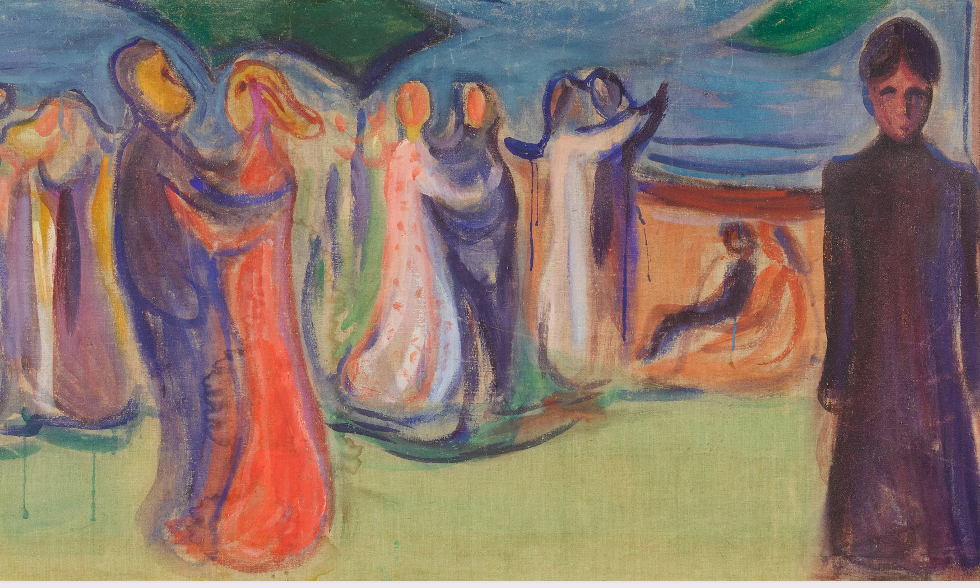Middle section of Dance on the Beach by Edvard Munch
A monumental painting by Edvard Munch, which was hidden from Nazis in a remote barn in a Norwegian forest along with a version of The Scream, is expected to fetch between $15m-$25m when it goes under the hammer at Sotheby’s in London on 1 March.
Proceeds of the sale will be split with the family of Curt Glaser, a prominent German art critic and collector who was forced to sell the work in Berlin in 1934 as he fled the Nazis. Just months later, Thomas Olsen, a Norwegian shipowner and Munch’s neighbour, bought Dance on the Beach at an Oslo auction along with a number of other works by Munch. Both Glaser and Olsen had been friends and patrons of the artist, who painted portraits of both of their wives.
Full view of Dance on the Beach by Munch
Measuring four metres wide, Dance on the Beach was part of a frieze of 12 panels commissioned by the Berlin-based theatre director Max Reinhardt in 1906. The theatre was created in the round and the frieze intended to surround the audience in an upper hall. Depicting “images from the modern psyche”, as Munch put it, the composition in the Sotheby’s panel features dancing figures, with two of the artist’s greatest loves—Tulla Larsen and Millie Thaulow—in the foreground. Both affairs ended in tragedy and heartbreak.
This is not the first instance of Sotheby's offering works by Munch that were once owned and sold under duress by Glaser and then subsequently bought by Olsen. In 2021, the auction house sold another similarly titled frieze, Embrace on the Beach, for £16.2m (with fees) at a cross-category sale in London, alongside a self-portrait for £4.3m (with fees). Both these works were hidden in the same barn as Dance on the Beach.
Glaser, who was the director of the Berlin State Art Library and who published the first German monograph on Munch in 1917, acquired the painting in 1912 when the theatre was refurbished and the frieze split up. In April 1933, the Nazis removed Glaser from his post because he was Jewish. A month later, the art historian sold his collection, which also included works by Henri Matisse and Max Beckmann, under duress and escaped to Switzerland, eventually making his way to America, where he died in 1943.
Olsen, who died in 1969, went on to assemble an unparalleled collection of around 30 works by Munch, including one of four versions of The Scream. After Britain declared war on Germany in 1939, he hid his collection for the duration of the conflict in a barn in the forest, including The Scream, which Sotheby’s sold on behalf of the Olsen family for a then record $119.9m in 2012. Proceeds went to Petter Olsen’s museum at Ramme and the restoration of Munch’s house there, which will be open to visitors next summer.
The current sale has been negotiated by the Glaser and Olsen families; the lot carries no guarantee.
Simon Shaw, Sotheby’s vice chairman of fine arts, notes that Dance on the Beach “is among the greatest of all Expressionist masterpieces remaining in private hands—its shattering emotional impact remains as powerful today as in 1906”.

